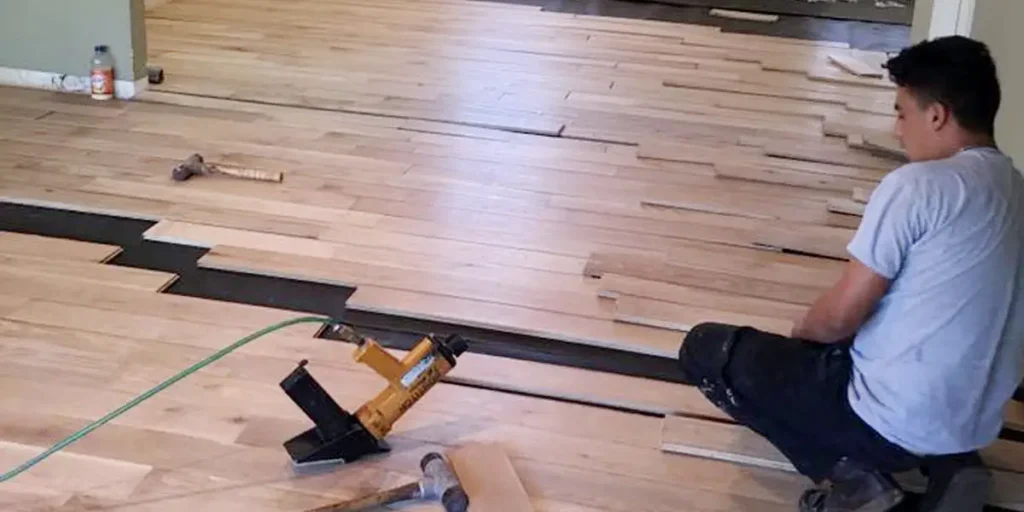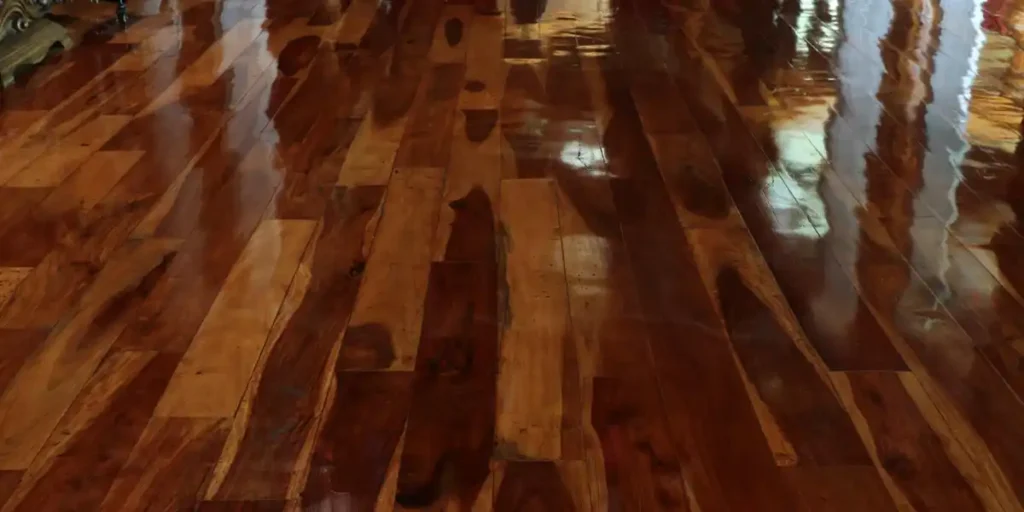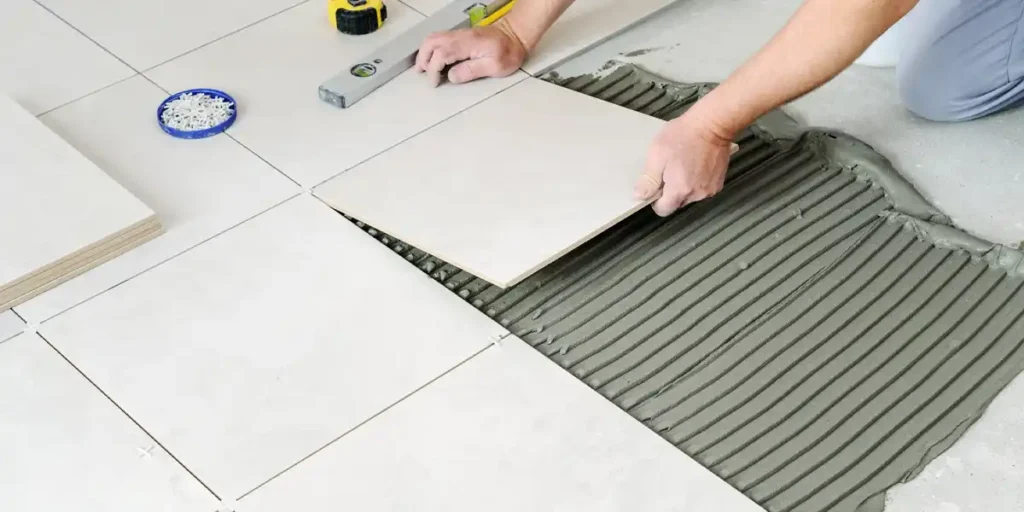Your floors endure daily wear and tear, from heavy foot traffic to accidental spills and furniture scuffs. But when do minor scratches become a serious issue? Whether you have hardwood, laminate, vinyl, or tile flooring, knowing when and how to repair them can save you from costly replacements.
Ignoring minor flooring issues can lead to the following:
- Structural damage that worsens over time
- Trip hazards caused by loose or uneven boards
- Decreased property value due to worn-out flooring
If your floor looks worn or damaged, don’t worry; most flooring types can be repaired using the right techniques. Let’s explore the best ways to fix common floor problems for every material.
Common Flooring Issues That Need Professional Attention
From scratches and dents to water damage and loose tiles, professional flooring repair services can restore your floors’ durability, safety, and aesthetic appeal.
1. Hardwood Floor Damage
Hardwood floors can suffer from the following:
- Scratches & scuffs from furniture and pet claws
- Water damage leading to stains, warping, or cupping
- Dents & gouges caused by heavy objects
- Buckling due to temperature fluctuations
2. Tile and Stone Problems
Tile floors can suffer from
- Cracked tiles from impact damage
- Loose tiles due to weakened adhesive
- Grout discoloration leads to moisture buildup
3. Carpet Repair Needs
- Burns & tears from dropped cigarettes or furniture
- Rippling & stretching causing uneven surfaces
- Stains that won’t lift even with deep cleaning
Professional Repair Solutions for Every Flooring Type
Professional flooring repair solutions ensure long-lasting results by using expert techniques and high-quality materials tailored to each flooring type, from hardwood and laminate to tile and vinyl.
Hardwood Floor Repair
Hardwood floor repair restores the beauty and durability of your flooring by fixing scratches, dents, and water damage using expert techniques like sanding, refinishing, and board replacement.
Assessing Hardwood Floor Damage
Before repairs, identify:
- Superficial scratches (can be buffed out)
- Deep gouges (may require wood filler)
- Water-damaged boards (replacement needed)
Step-by-Step Hardwood Floor Repair
- Cleaning and Preparation
- Sweep and mop to remove debris before repairing.
- Fixing Minor Scratches
- Apply a wood stain marker or buff with a microfiber cloth.
- Repairing Deep Gouges
- Use wood filler, sand the area, then refinish.
- Fixing Warped or Cupped Boards
- Replace individual planks or sand down minor warping.
- Sealing and Refinishing
- Apply protective coatings to prevent future damage.
Laminate Flooring Repair
Laminate flooring repair is essential for fixing scratches, dents, and damaged planks, helping to restore its original look without needing a full replacement.
How to Fix Scratches on Laminate Floors
- Light scratches? Use a laminate repair kit.
- Deep scratches? Apply wood putty and buff.
Replacing a Single Laminate Plank Without Removing the Floor
- Cut along the damaged plank.
- Remove the damaged section.
- Insert a new plank and secure it.
Preventing Further Damage to Laminate Flooring
- Use furniture pads to avoid dents.
- Clean spills immediately to prevent swelling.
Tile and Stone Floor Repair
Cracked or loose tiles can be hazardous and unsightly, but expert repairs, ranging from grout restoration to tile replacement, can restore durability and aesthetics effortlessly.
How to Repair Cracked or Chipped Tiles
- Use epoxy filler for minor cracks.
- Replace tiles for large damage.
Fixing Loose Grout and Tiles
- Reapply grout to stabilize loose tiles.
- Use waterproof sealants to prevent future damage.
Vinyl and Carpet Repair
Whether dealing with scratched vinyl or torn carpets, professional repair solutions can seamlessly restore their appearance and durability, ensuring long-lasting flooring.
Repairing Vinyl Flooring Scratches and Tears
- Minor scratches? Apply a vinyl repair compound.
- Tears? Use vinyl adhesive to seal them.
Fixing Burns and Rips in Carpet
- Patch the damaged section using a carpet repair kit.
- Stretch and secure loose carpeting to remove wrinkles.
Benefits of Professional Flooring Repair
Professional flooring repair enhances durability, restores aesthetic appeal, prevents further damage, and extends the lifespan of your floors, saving you money in the long run.
1. Cost-Effectiveness
- DIY mistakes can lead to expensive repairs later.
- Professional services extend the life of your floors.
2. Durability and Aesthetic Appeal
- Expert repairs ensure seamless blending with existing flooring.
- High-quality materials improve floor longevity.
Maintenance Tips After Repair
Regular maintenance after flooring repair is essential to extend its lifespan. Simple habits like daily cleaning, using protective pads, and addressing minor issues promptly can prevent costly future damage.
1. Daily Care Routines
- Sweep daily to remove dust and debris.
- Mop with manufacturer-approved cleaning products.
2. Preventive Measures to Avoid Future Damage
- Use rugs in high-traffic areas.
- Maintain humidity levels to prevent wood expansion.
- Fix minor issues before they escalate.
Final Thoughts: Protect Your Floors with Proper Repair & Maintenance
Your floors are an essential part of your home, and taking care of them ensures they remain beautiful and functional for years to come.
Whether you’re repairing scratches on hardwood, replacing a damaged laminate plank, or fixing cracked tiles, the right repair methods can save you time and money.
Need expert advice or professional flooring repair? Contact us today to restore your floors to their original beauty!
Frequently Asked Questions (FAQs)
1. Can you fix a gouge in a hardwood floor?
Yes, deep gouges can be repaired using wood filler, sanding, and refinishing.
2. Can you replace a single laminate plank?
Yes, damaged laminate planks can be replaced without removing the entire floor.
3. How do you repair cracked tiles?
Small cracks can be filled with epoxy, but large damage may require tile replacement.
4. What’s the best way to fix carpet burns?
Cut out the burnt area and patch it with a matching carpet piece.
5. How do you prevent future flooring damage?
Use furniture pads, avoid dragging heavy objects, and maintain regular cleaning.




